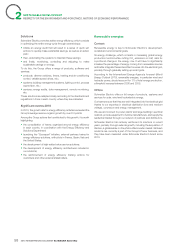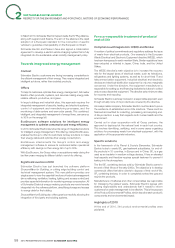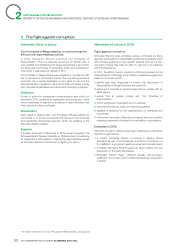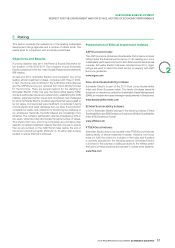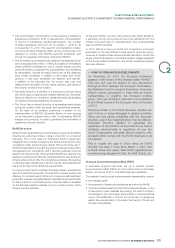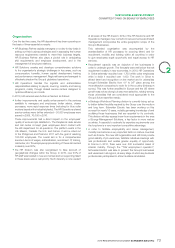APC 2010 Annual Report Download - page 68
Download and view the complete annual report
Please find page 68 of the 2010 APC annual report below. You can navigate through the pages in the report by either clicking on the pages listed below, or by using the keyword search tool below to find specific information within the annual report.
SUSTAINABLE DEVELOPMENT
2SCHNEIDER ELECTRIC’S COMMITMENT TOENVIRONMENTAL PERFORMANCE
3 Energy Savings
Schneider Electric’s Approach
In general, Schneider Electric sites are average consumers of energy,
compared with more energy intensive industries. However, Schneider
Electric wishes to set an example in the reduction of energy
consumption by applying its own solutions. Around 5% of our total
emissions come from energy consumption in our sites (according to
the carbon assessment of our business in 2007). Energy effi ciency
in our sites, with an objective of a 4% decrease in 2010 compared
to 2009 and a 4% decrease in 2011 compared to 2010, helps us
fulfi ll our objective for the reduction of CO2 emissions for the Planet
& Society Barometer (see page 64 - Reduction of CO2 Emissions).
Since 2005, Schneider Electric has fixed annual objectives for
reduction and publishes (internally) the energy consumption of each
of its production and logistics sites each year, as part of the continual
improvement program called Energy Action. Energy consumption
includes electricity, heating fuel, natural gas and, in rare cases, heat
from urban hot water networks, essentially for heating requirements.
The Group met and in some cases exceeded its objective of reducing
energy consumption per production site employee by 10% between
2005 and 2008.
The Planet & Society Barometer for the One program (2009-2011)
extended the monitoring of consumption to tertiary sites with
more than 300employees, including these into the objectives for
ISO14001 certifi cation of sites. The Group’s head offi ce in France
was therefore certifi ed according to the ISO14001 environmental
management standard and the EN 16001 energy management
standard in 2010. The sites’ energy consumption is monitored on a
monthly basis by the Management Board of the Industrial Operations
Management since 2010. Global Supply Chain Management is
responsible for all of the Group’s sites. Schneider Electric continued
the deployment of the Energy Effi ciency Monitoring (EEM) program
in its main energy consuming sites to ensure accurate measurement
of the actual reduction in consumption, eliminating the effects of
changes in climate and activity level from one year to the next.
Measures to reduce energy consumption have also been
implemented in Schneider Electric’s data centers, but have not been
published at Group level.
Main Plans of Action in 2010
Energy Action program
Energy Action is a program for the continual reduction in energy
consumption in all of the Group’s sites. The objectives are:
•cutting out waste of electricity, natural gas and oil, and thereby
reducing costs;
•deploying Schneider Electric’s energy effi ciency solutions at its
own sites;
•raising employees’ awareness about new energy effi ciency
devices and their own contribution to product development.
The program focuses on such key areas as HVAC, certain equipment
(such as air compressors), lighting and specifi c industrial processes.
Many initiatives are implemented internally to improve understanding
of the short and long term benefi ts of energy effi ciency: awareness
campaigns, the election of “energy champions” in each country,
creation of local work groups to deploy Energy Action measures,
the appointment of the best employee and best site in terms of
energy effi ciency. There is also a dedicated intranet site. This provides
information on progress and the results obtained as part of Energy
Action. Events and symposiums have been organised in France, the
UK, South Korea, Turkey, South Africa, Singapore, and the US for
customers and partners.
The program resulted in the following achievements in 2010:
•256 sites published their energy data and 75 sites centralised
monitoring of consumption using remote monitoring tools; 60%
of these are Schneider Electric’s more energy intensive sites;
•100 sites conducted formal internal audits of their energy
consumption;
•EUR11 million were invested in energy effi ciency projects, the
majority of which with a return on investment of less than three
years;
•26,000 lights were replaced, 350 speed drives were used,
1,600 meters in 110 sites, hundreds of sensors, regulators, and
building management systems were installed.
2010 REGISTRATION DOCUMENT SCHNEIDER ELECTRIC66


